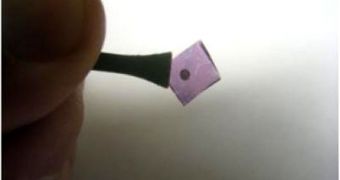Scientists at the University of Pennsylvania (UP) have recently taken a major step in the quest to develop devices that are capable of transforming light into electricity. They managed to devise an array of nanoscale gold molecules able to trigger the transduction of optical radiation into electrical current. The new system works in a manner similar to that employed inside photovoltaic solar cells, the team reveals. The new finding could have a wide range of applications in many fields of science, but especially in the electronics industry.
Additionally, the group reveals, the devices could be used to induce and project electrical current in molecules. This is made possible by the fact that the molecule array responds to electromagnetic waves by producing surface plasmons. These particles can be induced in devices such as biosensors, and they have the potential to allow for very efficient energy harvesting for powering up other nanoscale devices. Circuits that power themselves, and require only light to work, may also become possible, if the technology is developed and improved even further.
Future nanoscale optoelectronic products, such as “resonant” optical antennae, could also become possible with additional advancements in this field of research. “If the efficiency of the system could be scaled up without any additional, unforeseen limitations, we could conceivably manufacture a one-amp, one-volt sample the diameter of a human hair and an inch long,” says UP professor of materials science Dawn Bonnell, who is also the director of the university's Nano/Bio Interface Center. Details of the investigation appear in the latest issue of the respected scientific journal ACS Nano.
Furthermore, this type of devices could be employed to produce new classes of computer memory. At this point, these instruments encode data in never-ending rows of “1s” and “0s” but the UP researchers believe that, by using the new products, the electronics industry could develop methods of encoding the same information inside various wavelengths of light. Finally, energy-harvesting devices could also be made possible, and they could have a wide array of applications, from self-powering clothing to self-propelling nanoscale robots and so on.

 14 DAY TRIAL //
14 DAY TRIAL //